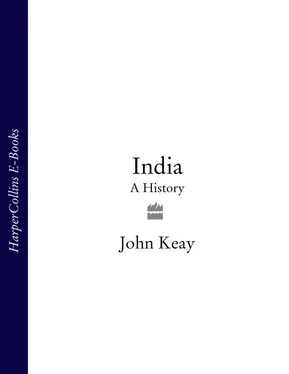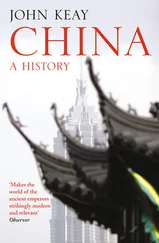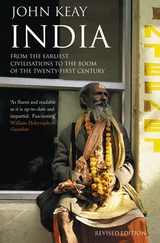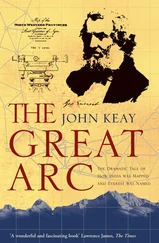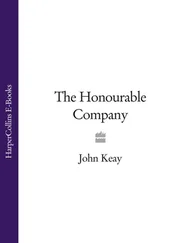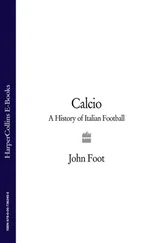Thus, for the titanic struggle recorded in the Mahabharata , we already have three dates: 3102 BC, C1400 BC and C950 BC. A couple of millennia one way or the other is a long time even in prehistoric terms. India’s history, though undoubtedly ancient, leaves much room for manoeuvre. A mistranslated word from one of the many voluminous, difficult and defective texts wherein, long after their composition, the Vedic verses were eventually written down, can create havoc. Similarly a chance discovery of no obvious provenance can prompt major revisions.
Another flood, later than the Sumerian one but much earlier than that at Hastinapura and so perhaps a serious contender for the one which Manu survived, is thought by some to have once inundated the plains of the lower Indus in what is now Pakistan. Geologists date it to some time soon after 2000 BC, and believe that it may in fact have been a succession of inundations. Whether they were the result of climate change, of tectonic action lower down the river resulting in damming and the formation of inland lakes, or simply the cumulative effect of annual siltation is not clear. But whatever the cause, the floods were bad news for those agriculturalists who had pioneered a highly productive economy based on growing cereals in the fine soil alongside the river. Managing the river’s seasonal rise so as to enrich and irrigate their fields was the key to their success. An annual surplus had generated wealth, encouraged craft industries and fostered trade. Settlements had become cities. Along the lower Indus and its tributaries had grown up one of the world’s first urban societies, a contemporary of those on the Nile and the Euphrates and a rival for the tag of ‘the cradle of civilisation’.
Then, soon after 2000 BC according to the archaeologists, came the floods. If they did not actually overwhelm this precocious civilisation, they certainly obliterated it. In time, layer after layer of Indus mud, possibly wind-blown as well as water-borne, choked the streets, rotted the timbers, and piled high above the rooftops. The ground level rose by ten metres and the water table followed it. Meanwhile the river resumed its regular flow and found new channels down which to flood. On top of the cities, now consigned to oblivion beneath tons of alluvium, other peoples grazed their goats, sowed their seeds and spun their myths. A great civilisation was lost to memory.
Not until nearly four thousand years later, in fact in the early 1920s, was its existence even suspected. It was pure chance that Indian and British archaeologists, while investigating later more visible ruins at Mohenjo-daro in Sind and at Harappa in the Panjab, made the prehistoric discovery of the twentieth century. They called their find the ‘Indus valley civilisation’, and drew the obvious comparisons with those of Egypt and Sumeria. Indeed they thought that it might be an offshoot of the latter. Later, as its sophisticated and surprisingly uniform culture became more apparent, the Indus valley civilisation was accorded distinct status. And when the extent of its cultural reach was found to embrace a host of other sites, many of them well beyond the valley of the Indus, it was renamed after one of these sites as the Harappan civilisation.
Suddenly India’s history had acquired a rich prehistoric pedigree of archaeologically verifiable antiquity. Here, it seemed, was a worthy companion to that Sanskrit literary heritage of equally impressive, though maddeningly uncertain, antiquity as comprised by the Vedas and associated texts – the Brahmanas and Puranas as well as epics such as the Mahabharata . Perhaps these two very different sources, the one purely archaeological and the other purely literary, would complement one another. An ancient and immensely distinguished civilisation would thus be revealed in multidimensional detail.
The Harappan finds included buildings, tools, artefacts, jewellery and some sculpture. Intimate details about Harappan housing, diet, dentistry and waste disposal came to light. Maritime trade with Sumeria was attested and led to some cross-dating. The Carbon 14 process produced comparative dates accurate to plus or minus a century or so. Amongst the Harappans there was even what looked like a system of writing: some four hundred characters were identified, each, it was deduced, representing a single word; and they read from right to left. Sanskritists were soon clear that this was not Sanskrit, the language of the Vedic heritage. But it might be some kind of proto-Dravidian, the parent of south India’s languages, while the script did suggest similarities with Brahmi, the earliest Indian script hitherto identified and read. It seemed only a matter of painstaking study before the Harappan language would be understood and the secrets of its civilisation revealed.
Unfortunately this script, despite the best endeavours of international scholarship and despite the code-cracking potential of computers, remains undeciphered. Totally lacking, therefore, is any intelligible record of the Harappans written by themselves. Who were they? What did they worship? Had they established a recognisable state or states? They tell us nothing. How did they come to be there? And what became of them in the end? We don’t know. Here was history complete with approximate dates, cities, industries and arts, but absolutely no recorded events. Here too was a society with a distinct and extensive culture but, barring some not very helpful bones, no people, indeed without a single name.
Names, on the other hand, were precisely what that Sanskrit literary tradition of the Vedas provided – in mind-boggling abundance. Kings and heroes, gods and demons, places and peoples, tumble from the Vedas, Brahmanas , Puranas and epics as if ready-made for the compilation of a historical index. Although no single site, no potsherd or artefact, can certainly be identified with the people who composed these verses, and although their chronology remains shrouded in that maddening uncertainty, we know that they called themselves arya – hence ‘Aryan’ – and we know of their lifestyle, their social organisation, their beliefs and their innumerable antecedents and descendants. Here, in short, was a people proudly obsessed with the past, who defined themselves in terms of lineages reaching back through the generations to Manu, and whose records might therefore provide for the enigmatic Harappan civilisation precisely the human detail that it so notably lacked.
Would that it were so. In fact, as will be seen, though the two civilisations – the Harappan and the Aryan – overlapped in geography and possibly also in chronology, no shred of coincidence certainly connects them. India’s history starts with the apparently irreconcilable. Only in the last few years have sustainable connections between its Harappan and Aryan constituents been tentatively proposed. These connections, though tantalising, remain few and far from conclusive. India’s history as currently understood must be seen as beginning with two woefully unconnected cultures.
This state of affairs may, however, serve as a warning. Despite the pick-and-preach approach of many nationalist historians, geographical India is not now, and never has been, a single politico-cultural entity. In fact, its current three-way division between Pakistan, India and Bangladesh, far from denying some intrinsic unity, is a notable simplification of its traditional plurality. Analogies should be drawn, if at all, not with Egypt or with Greece but with regional constructs of a similar size like the Middle East or Europe. And just as in the Middle East those early civilisations in Egypt and Mesopotamia flourished simultaneously yet quite independently, or just as later in Europe the Byzantine and Carolingian empires could both claim pre-eminence without necessarily coming into conflict, so it is in India.
Читать дальше
